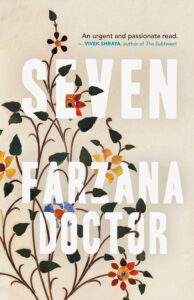October 26, 2020
Blue Monday

There’s reading and there’s reading, you know? The latter an intense and visceral experience, and I don’t know if it’s about the book or the moment, or an amazing alchemy involving both. I know you can’t plan it, and simply have to wait for the moment to arrive, often when you really need it (like when I reread Kate Atkinson last spring and it brought me back to life…)
I took part in the Turning the Page on Cancer readathon yesterday and read for 8 hours straight, which is pretty much my ideal way to spend a day even when it’s not for charity. Putting together a stack of books for the event late last week—books on my to-be-read shelf, books that weren’t too long so I could feel I was making progress. They all turned out to be blue, which is the opposite of the Breast Cancer pink palette, but I always like to do books my own way. (PS We raised more than $30,000!!!)
I didn’t read Louise Penny’s latest, All the Devils Are Here, as part of the readathon, but it was almost like I did because a) the book was also blue and b) I had to speed through it Friday and Saturday so it would be finished in time for me to begin the official stack on Sunday. And I enjoyed the novel so very much. I always love me an Inspector Gamache novel, but this one seemed particularly compelling, I think because of its close focus on a single plot plot-line. I was absolutely wrapped up in the plot, gasped aloud several times (and yes, all gasps are aloud, but you know what I mean…) and found the climax rich and satisfying. It takes us away from Three Pines, to Paris, where Gamache and Reine-Marie have gone to await the birth of their new grandchild. And when Gamache’s godfather is struck down in a hit-and-run that seems calculated, the whole family becomes embroiled in a crime with potential for massive devastation—but is there anybody they can trust?
I had been nervous to read Rumaan Alam’s new novel Leave the World Behind because I’d heard reports it was bleak and disturbing, but also that it was phenomenal and it’s nominated for a National Book Award. So what to do? Because I’m not exactly emotionally strong as steel these days, more like wobbly as Jello, and I wasn’t sure I had the stomach. BUT if I read it in a couple of hours in one sitting, in the morning…it wouldn’t be so bad, I decided. This story of an ordinary time that turns into an apocalypse, when a white family is staying at remote holiday home and then an older Black couple turn up, the home’s owners, saying something unspecific but devastating as taken place in the the city, and they have nowhere else to, and things just get weirder and weirder, and it was so good. Resonant in this plague year (the mother’s plea, “I just want everything to be okay!) and the writing and imagery so striking (the flamingos!) even if I do feel he gets women and sex wrong (in this book, a woman can’t find her child, and likens this to being as strange as not being able to find her earlobes or her clitoris, but man, I bet there are a lot of women who can’t find their clitoris, it just was very off.) Am I glad I read this book? Yes, it was so interesting and rich and propulsive. Do I kind of wish I’d never read it though? Yes, because I’ve been disturbed by its darkness and slightly frightened ever since I finished it, but what a testament to the book’s power, right? This one is definitely a mindfuck.
But Agatha, by Anne Catherine Bomann, is not, thank goodness. A charming tale, one that could have been twee, but wasn’t. It actually spoke to the very different Leave the World Behind in a variety of ways, actually, about the danger/desire to live apart from humanity, about existential longing, about trauma and despair. Also set in Paris, which took me back to Louise Penny the day before! This one is a slim volume and I read it in an hour, but I loved it, translated from the Danish by Caroline Waight and published in Canada by BookHug, About a therapist whose detachment from his patients and the world around him becomes blurry when a new patient arrives and his stalwart secretary leaves to care for her dying husband. It also contains a recipe for apple cake, so this one was always up my street anyway, but I adored it.
I also loved David Berry’s On Nostalgia, which I bought after his 49thShelf launchpad post, and while it’s also a slim volume, it’s packed and heavy and I am pleased that it was part of the whirlwind of my day, adding a bit of literary heft, and it tapped into similar existential questions I’d encountered in the previous two books. Why do we spend so much time looking back? Why do we disdain this impulse? How do politicians manipulate it? How is Back to the Future actually an anti-nostalgic exercise? How does the dynamicism of social media affect our engagement with it, and that we have no memories of sites like Facebook or Instagram which is changing our user experiences of them constantly? It was so interesting, and the prose was engaging and funny. I am very glad I read it.
And then finally Bluebird, Bluebird, by Attica Locke, whose first two novels I loved, and I picked this one up at Lighthouse Books in the summer. (Literally. And then had to buy because Covid.) I’m not so far into it now, but am riveted, about a Black Texas Ranger who’s caught between a rock and a hard place, a familiar situation I would imagine for Black police officers everywhere. He’s also a law school drop-out and pulled between the desire to challenge the law and to serve it—in which corner does justice lie?
On the eve of my own book release, with so much else going on in the world and my nerves all frayed, butterflies exploding in my stomach, etc, it was such a privilege and a pleasure to escape into reading this weekend, not to leave the world behind at all (SPOILER: IT IS TO MUCH WITH US!) but to give me new ways to think about it, and celebrate the magic that reading can do.
October 22, 2020
Perfect October Reads
The Searcher, by Tana French
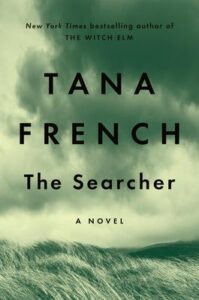
What a gift is any new book by Tana French, and The Searcher is no exception. Set in rural Ireland where a retired Chicago cop has come to make a new life after escaping his old one for reasons he really doesn’t want to get into…but then a kid shows up urging him to pursue a local mystery.
This is a quiet, thoughtful kind of thriller, not heavy on plot at all, but propelled by the most terrific tension. I loved her previous novel, The Witch Elm, but it was kind of baggy. The Searcher is a more satisfying read, rich and soulful, and really hard to put down, and enlivened with a moral ambiguity that’s unfailingly interesting.
Mexican Gothic, by Silvia Moreno-Garcia

And believe the hype about the bestselling Mexican Gothic. Spooky haunted house book in the 19th century English tradition, terrifying and absolutely delicious, and with a great critique of colonialism and racism. Moreno-Garcia’s Noemí Taboada is the heroine of your wildest dreams, cigarette-smoking, convertible-driving, as clever as she is gutsy, and determined to save her cousin Catalina who’s been having terrifying visions since arriving at her new husband’s strange family home, built on top of a fateful silver mine—but the strange and deadly force at work in the house is determined to stop either of them from leaving. You’ll be having disturbing dreams until you’ve made it through this one, so you should probably just clear your calendar.
October 16, 2020
Petra, by Shaena Lambert
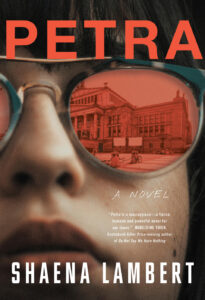
I keep imagining the opportunity to interview Shaena Lambert, and the inevitable question: “So why HAVE you chosen to tell the story of Petra Kelly, German Activist and leading force in the creation of The Green Party in the 1980s?” Though I think I already know the answer, and it’s mainly to do with the expansive possibilities of fiction, and how it can shine a light into dark corners that no archive could hope to illuminate. The limits of nonfiction too for a figure whose mythology was almost as important as the facts of her character. And yet that forty years after her fame and three decades after her death that she’s become an unknown, another woman cast aside under the pounding waves of history. So what does it mean then for me to be encountering Petra Kelly for the first time through Lambert’s fictional lens as I have done while reading her novel Petra? It’s destabilizing, a fictional biography, though perhaps in a way that Petra Kelly herself might have appreciated. Or so I can speculate…
While Petra herself was real, all the other characters in the book are invented, or created as composites of actual figures. The story told from the point of view of a Manfred Schwartz, once Petra’s lover, and then her colleague in government as the Greens are elected to office in 1983 on a rising tide of popularity. Manfred never really gets over Petra, but then Lambert’s Petra is the type you don’t. A German who grew up in America in the 1960s and brings that same idealism to the divided Germany in what would turn out to be the last days of the Cold War—but nobody knew that then. Idealistic, uncompromising, seeing the world and its issues as interconnected as her Marxist colleagues never would.
Defying expectation at every turn, Kelly falls in love with an ex-NATO General, a love story with a sorry end. Which also might be part of the reason why Lambert imagines up the figure of Kelly’s General lover from scratch in her novel, for the unfathomability of his actions. Fiction permitting the author more latitude for the fathoming, imagining this figure who’d grown up in Nazi German, fought for the Germans in World War Two, the atrocities that he would have been party to, and how a person lives with that.
The novel takes the form of a historical record created by Manfred, who is still under Petra’s spell after all these years, and is trying to make sense of what happened between them and of her character in general. A proxy for the author herself, I suppose, and the answer the question I was pondering at the beginning of this review comes with a line near the end of the book, delivered by Manfred’s wife: “Maybe you simply can’t make sense of it all…I mean, maybe it—the past—doesn’t take the form of a thesis.” Which is where the art comes in, the role of literature, to make a sense out of something that doesn’t make sense at all.
By the end of the book, Petra has become a full-fledged spy novel, as we learn who among the Greens had been acting as Soviet agents, this information offering some illumination to Manfred about what had gone on decades before. Petra herself, however, remains somewhat in the shadows, the reader feeling the same frustration experienced by Manfred at how elusive her true nature remains, at how many of her secrets would die with her.
But that she is known through this book, if not actually understood, doesn’t lessen the novel’s impact, and in fact makes it all the more engaging, and in accordance with what actually happens in the world.
October 7, 2020
A Bite of the Apple, by Lennie Goodings
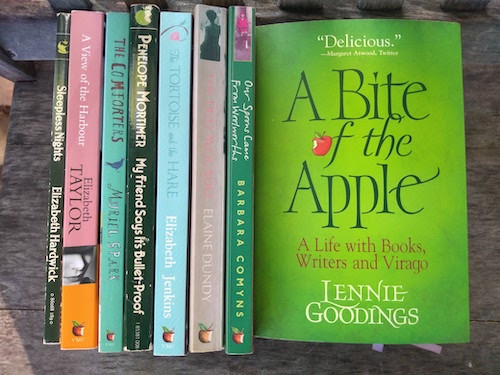
This book is everything. A memoir of Lennie Goodings’ 40 years in feminist publishing. The story of legendary Virago Press, which has meant a lot to me and so many other readers. A story of 40 years of feminism too, with fractious debate, changing trends, so much learning and thinking and growing. As a huge fan of mid century British women writers, my own stack of Virago books belies the press’s growing focus on intersectionality, and Goodings writes about that necessary change, her own growth and awareness, and missteps she made on the road to doing better. (It is refreshing to read about an older UK feminist who has not devolved into a raging bigot.)
In a moment of extreme division and polarization, this memoir is a balm. Goodings writes about taking inspiration from Virago author Grace Paley who called herself “a somewhat combative pacifist and cooperative anarchist.” Goodings continues, “Somewhere between these two options—fuck the patriarchy or keep plugging away for what you know is right— is how most women find themselves responding to sexism and inequality we need rage and inspiration we need realism and practical solutions and we need to know our histories literary and otherwise.” There is also the part about about how Decca Mitford and Maya Angelou were devoted friends and did a mean rendition of “Maxwell’s Silver Hammer”—WHAT???
And most of all, this is a book about books, celebrating the goodness of reading and the connections books forge. I loved it it. Turns out Goodings is Canadian too, and emigrated to England in the mid ’70s. Her book is out this month in Canada, published by the good people at Biblioasis.
September 30, 2020
Brighten the Corner Where You Are, by Carol Bruneau

“Since Maud Lewis’s death in 1970,” writes Carol Bruneau in the Author’s Note to her new novel, Brighten the Corner Where You Are, “her story has become so mythologized it’s just about impossible to separate hearsay from reality, original information from an ever-deepening well of common knowledge.”
And in Bruneau’s own novel, which is based on research and interviews to imagine the inner life of one of Nova Scotia’s most famous and fascinating painters, she attempts no such thing, inhabiting instead an enigmatic space between that doesn’t bother with such distinctions, or emphasize the contrast between Lewis’s bright and floral artistic vision and the realities of her life which were informed by abject poverty, disability, and possible/likely abuse and violence from her husband, Everett Lewis, whose portrayal by Ethan Hawke in the celebrated 2017 film Maudie was more than a little bit generous.
This middle ground is from where Lewis narrates her story, after her death, but still able to see what’s going on in the world below. Now liberated from her disabled body and her marriage, both of which she describes as cages of a sort, but “What these folks don’t see is that these cages made me the bird I am, made me sing in the way I did…”
With rich and artful prose, and a narrative that first appears simple and straightforward and then is revealed to be just a little bit off-kilter (in the style of Lewis’s paintings), Bruneau complicates the myth of Maud Lewis, depicting her as a chain-smoking, deep-thinking, resilient artist who persisted in her vision in the face of adversity, who was an agent in her own destiny just as much as she was a victim of circumstance and impoverishment. Bruneau lets nobody off the hook for this, certainly not Everett Lewis himself, who hoarded the proceeds from his wife’s painting sales and deprived her of luxuries, among them electricity and a flush toilet.
But how could a person with his background (he grew up impoverished himself) have turned out any other way, Bruneau’s Maud insists. And what about the culpability of a society that accepts that poverty is simply a fact, that some lives are worth more than other, whose glaring inequities are as acute as they ever were while Lewis herself was still living.
This book is beautiful, as rich and uplifting as it is a literary masterpiece.
September 23, 2020
If Sylvie Had Nine Lives, by Leona Theis
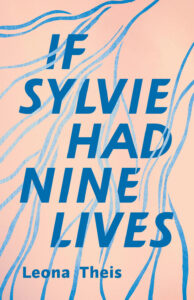
Okay, imagine the craft and form of Caroline Adderson’s Ellen in Pieces, a premise and scope like Kate Atkinson’s Life After Life, and an attention to the details of ordinary life that recalls the work of Carol Shields? (There’s also a Bronwen Wallace People You’d Trust Your Life To vibe that I can’t quite put my finger on…)
If Sylvie Had Nine Lives, by Leona Theis, is SO GOOD, a novel-in-stories (for real. It works.) that begins in 1974 as nineteen-year-old Sylvie is just three days away from marrying Jack, for better or for worse…
And the book that follows explores the many outcomes and possibilities created by Sylvie’s choices, several forks in the road, and why they matter, or why they don’t. What if life is not a river, the novel’s brief intro suggests; what if it were a delta instead?
Sylvie leaves Jack, and moves in with a roommate whose violent boyfriend’s advances she manages to refuse. Or Sylvie marries Jack and saves his life when he falls into the lake. Or she leaves Jack a few years down the line, pregnant. She marries her best friend from high school has two kids. She marries nobody and starts her own business. She and Jack spend their twentieth wedding anniversary watching the OJ Simpson Bronco chase. Sylvie remains single and becomes a university professor. And so on, these stories showing very different outcomes of Sylvie moving through the decades, getting older, the very same character (one with a propensity for terrible choices) contending with different circumstances.
This premise could be considered a gimmick, but the writing is just so excellent that the whole book shines, and the stories culminate the same way they might in a more traditional narrative. Perhaps some readers could become frustrated with each new story destabilizing what came before, but I just found it really interesting—and it works on a meta level too with Sylvie considering several times the different roads and doors she might have chosen. It is interesting also that the reader would mind at all if the “truth” of a fictional person’s story was undermined—if you’ve read the last page of Kate Atkinson’s A God in Ruins, you’ll know what I’m talking about. Isn’t is amazing that it matters so much? And it’s a sign that the author has achieved something that it does matter.
I’ve not read anything by Leona Theis before, but she’s been shortlisted for the CBC Literary Award, appeared in The Journey Prize Stories, and had the amazing Elizabeth McCracken select her story “How Sylvie Failed to Become a Better Person Through Yoga” as winner of the American Short Fiction contest in 2016, which is the coolest honour I can think of. And this novel lives up to the anticipation of such a biography—the book is wonderful. Definitely my first favourite book of the fall season.
September 16, 2020
The Smallest Lights in the Universe, by Sara Seager
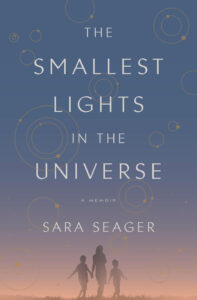
Space made news this week with the discovery of possible life on Venus, and what was most exciting for me about this development was that on the team of researchers who’d made this discovery was Dr. Sara Seager, MIT Astrophysicist and author of Smallest Lights in the Universe, which I was reading last week. Can you imagine discovering alien lifeforms and releasing an emotionally powerful memoir all in the same season?
But then Sara Seager doesn’t do anything in an ordinary fashion, as the reader discovers. She write about her unconventional childhood growing up in Toronto, how her passion for astronomy grew, how she found her way to marriage and family, and how she endured the loss of her husband, who had kept their domestic life afloat while Seager had her head in the outer-reaches of space, developing theories of exoplanets that had seemed like fiction when she began her work in the 1990s. She writes too about her recent diagnosis on the autism spectrum, and her singular point of view in this regard is what makes her memoir so fascinating. When her first husband was interested in her, she writes, she initially rejected his advances, because she just wasn’t that into people, and her strongest feeling toward her fellow humans was “tolerance. I also loved the straightforwardness with which she writes about motherhood, which she was never ambivalent about, but which was hard to balance with a busy career, and even moreso after she became a solo parent. These kinds of ideas have been expressed so many times, but Seager manages to do so devoid of the usual cliches and with a fresh and interesting perspective. Further, her quest to learn what can be discovered in the outer reaches of the universe, her belief in other possibilities, in different worlds, is the kind of perspective than seems urgently necessary now, when we need curiosity and imagination more than ever.
September 10, 2020
Songs for the End of the World, by Saleema Nawaz
When Saleema Nawaz’s Songs for the End of the World was published as an e-book in May, I wasn’t ready for it. I couldn’t do it. A book about a novel coronavirus that sweeps across the world in 2020, beginning in China, and then exploding in New York City. Fiction as uncanny as all-get-out (the novel was written between 2013 and 2019—um, and it includes in its cast of characters a novelist whose book about a pandemic is proving eerily similar to real life events—I KNOW!) but I was having enough trouble facing such things in the world. Plus I don’t have an e-reader…
It was with great hope that I was planning to read the book when it came out in print in August. Hoping the world might seem more recognizable then, Nawaz’s story of a pandemic not quite so close to home, or perhaps that I would be able to put some distance between it and my own situation. And I am so glad that all this transpired, because I liked this novel so much, found it utterly absorbing, and rich.
I suppose it’s not so uncanny how prescient the book seems (it’s Nawaz’s third, following short story collection Mother Superior and the novel Bone and Bread) considering Nawaz based her own pandemic on disease models and intervention strategies. (She was also able to intuit that after a handful of days of quarantine, a person would inevitably order a treadmill.) In a Q&A at the end of the book, she goes into interesting detail about her process, and also writes about how while she didn’t necessarily set out to counter typical disaster narratives, she wanted to “explore…how the stories we tell can influence our behaviour in the real world, for better or for worse.”
(This reminded me of my favourite line from Ali Smith’s Autumn: “…whoever makes up the story makes up the world.” )
What’s most absorbing about the novel is not the pandemic plot, however. First, it is the sentences. “Calamity began, as usual, on an ordinary day. The city roiled with the amplified impatience of a million insomniacs, sleeping children breathed polluted air, low-level exploitation crept across neighbourhoods with insectile persistence, and a thousand everyday kindnesses failed to rise to the surface of consciousness.” How is that for an opener?
And second is the characters, beginning with Elliott, the first responder in Manhattan; Owen, a novelist whose novel appears belatedly on bestseller lists when the pandemic starts; Stu, an indie rockstar whose bandmate and wife, Emma, is pregnant; Sarah, a single mother, who contemplates her future with her child; Keelan, a philosopher whose on work on disasters has resonance for an audience that’s desperate for hope. Moving back and forth between the contemporary moment and pivotal events from the characters’ pasts (young Emma aboard a years-long sea voyage with her eccentric family as her mother freaks out about Y2K), Nawaz has each character singularly navigating the pandemic crisis, but also shows the ways in which these characters’ lives are intertwined in an intricate web, sometimes in ways the characters themselves aren’t even aware of.
She conjures the world in this book, perhaps more specifically than she ever intended, and therein lies the novel’s power. That it’s not the end of the world too—such a lazy cliche. Life and love continue on.
September 9, 2020
Field Notes From An Unintentional Birder, by Julia Zarankin
There are book reviews, and then there are those reviews of books a reader has been waiting a decade for, ever since the first time the reviewer met the book’s author and was presented with an essay collection by Anne Fadiman as a hostess gift. My friendship with Julia Zarankin was forged over the essay form—though she also introduced me to Wallace Stegner. We contain multitudes. And I’ve been wanted to read a book by her since our very first conversation—she was so smart, kind and hilarious. She was working on a collection of essays at the time about being multilingual. Had not long ago abandoned academia for a different kind of life, and she’d recently taken up…birding? It still seemed unlikely then, not yet a fundamental part of her identity. And a couple of years after we became friends, I had the privilege of her contributing a beautiful piece to my anthology The M Word, the final essay in the book.
As Julia’s passion for birding grew and grew, and she began to disappear every spring for migration season.
But now her book is here, Field Notes From An Unintentional Birder, which I loved as much as I loved any of Anne Fadiman’s essay collections, which is saying everything. And I began to think, as I was reading this book, that in her field notes on birding, Zarankin had also written field notes on blogging—all about paying attention, being patient and persistent, not fearing making mistakes, feeling the exhilaration of unbridled passion—and then I realized that what the book was was a field guide to life.
What a terrifically woven collection this so, so much more than the sum of its parts, each of which is wholly impressive. Through the lens of birding, Zarankin writes gorgeously about finding herself in her mid-thirties, divorced and having left her career. So what now? And it’s through birding that she finds the answers, to this, and to other questions, including how to stay in love, how to be brave, how to be comfortable in her own skin, to understand her own history as a migratory creature, how to live in the moment, and how to have purpose. How to be.
Those answers, of course, are not straightforward. Seeing birds does not lead to satisfaction, but instead a yearning for more of them. It means reconciling herself to the birds she’s missed, or those she might never see. But she learns too the pleasures of living in the moment, of being instead of always striving (though an urge to birdsplain is one that’s hard to shake).
The book has general appeal because birding, like blogging, is life—but I also love the details for birding life that Zarankin shares with such exuberance. She shows the peculiarities of the avian world, and the people who are part of it, in perfect, vivid detail.
September 9, 2020
Seven, by Farzana Doctor
A remarkable balance is required to create a novel about Female Genital Mutilation (FGM) that is also a pleasure to read, but Farzana Doctor pulls it off with Seven, a book that is also about marriage, family, motherhood, sexuality, and rediscovering one’s self and purpose at mid-life.
Sharifa has left her job as a teacher in New York City, and travels with her husband and daughter to India, her birthplace, where her husband will be working during his sabbatical. Other than homeschooling her daughter, however, Sharifa isn’t sure how she will spend her time in India, until she decides to partake in a research project to learn the story of her great-great-grandfather, a wealthy philanthropist who was married three times—and in his second marriage was possibly divorced?
Her marriage has just gone through a rocky patch, and so restoring that relationship is also in the forefront of Sharifa’s mind, as she becomes reacquainted with her aunts and cousins, and then realizes that her cousin’s online activism against FGM practices in their Muslim community (“khatna”) strikes much closer to home than she’d ever imagined. Turns out this archaic practice might not be talked about, but it still takes place today.
The different threads of this novel are woven powerfully. and culminate in a terrifically moving story, in particular a scene where Sharifa and other members of their community (including Sharifa’s excellent husband) gather together to publicly protest khatna, disrupting a long-held taboo. There are moments where this novel of ideas becomes much more driven by those ideas than the story itself, but I forgave these , because the book was so enveloping, and Sharifa’s awakening as to her own history was poignant and absorbing, ultimately hopeful and galvanizing. I loved having her voice in my head.
I also loved the historical thread of Sharifa’s great-great-grandfather, and its resonance in the contemporary story line, and how it all comes together so satisfying in the end.
But then the very end, oh my gosh, it destroyed me. The hardest, bravest literary choice, considering the world we live in, and how tidy endings make us too comfortable. I liked this book a lot throughout, but the leap Doctor takes in her book’s epilogue is so awesome and necessary, underlining the urgency of her message—and about how the pleasure we might take in reading this book (while we do) is actually far from the point.


